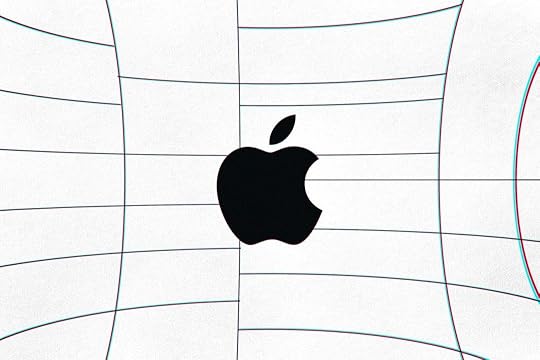Dominique Luchart's Blog, page 640
April 27, 2021
After months in space, Crew-1 astronauts look forward to SpaceX trip back to Earth, ,

After six months in orbit, the four astronauts who make up the SpaceX Crew-1 mission are ready to head home.
NASA astronauts Mike Hopkins, Victor Glover and Shannon Walker, plus Japan Aerospace Exploration Agency (JAXA) astronaut Soichi Noguchi have been living and working on the International Space Station since November. They arrived at the orbital outpost on a SpaceX Crew Dragon, the company’s first full-fledged mission to the station, and just last week they welcomed their replacements on Crew-2. Now, it’s time to head back to Earth, with the quartet departing on Wednesday (April 28).
“We’re excited for both and each are a little different,” Walker said during a news conference held Monday (April 26) when asked to compare launch and landing. “Now that we’re going home, it’s exciting because we don’t know quite what to expect, landing on the water under parachutes like this, and it’s just exciting that we get to go home and see our friends and family.”
In photos: SpaceX’s Crew-1 mission to the International Space Station
Despite the optimism, weather might keep the astronauts in space a little bit longer than planned as NASA and SpaceX watch conditions in the capsule’s splashdown zones off the coast of Florida.
But whatever day Crew-1 returns, the astronauts have good advice on their side from the only humans to have returned to Earth on a SpaceX capsule to date, the Demo-2 test mission’s Doug Hurley and Bob Behnken. The crew is ready for a “dynamic” arrival, particularly as the parachutes open, Hopkins said during the news conference, adding that he’ll be happy if he has an appetite when the capsule splashes down.
“With this new vehicle, and not having landed a lot before [the important thing] is just making sure you’re staying ahead of the capsule,” Hopkins said Hurley recommended. “That’s something that all of us have been focusing on over the last few days, preparing for that landing, just going over our procedures and making sure when we get into that sequence of events that we’re ready to go.”
NASA is also learning from its previous experience. Hurley and Behnken were met by a flotilla of private boaters, and the agency has said it’s working with the Coast Guard to make sure those boats keep a safe distance from the capsule this time. Hopkins noted that during splashdown, a key risk is fuel leaking from the capsule, and on that front the astronauts are much safer inside the capsule than any stray boaters would be in its vicinity.
Meanwhile, the astronauts looked back on their highlights from nearly six months in orbit. As a first-time spaceflyer, Glover had the most expansive answer. “Every single thing we’ve done up here has been the first time I’ve been able to do that,” he said.
But still one moment stood out: his first glimpse of Earth from orbit.
“I will never forget that moment and I actually recorded it because I really wanted to remember how I felt. It wasn’t about the view, it was about how the view made me feel,” he said. “Every time I look out the window in the Cupola I still feel the same way. Earth is amazing, it’s beautiful, it protects us, and so we should work hard to protect it.
Hopkins also cited the views — for him, from a makeshift bunk aboard the — in addition to the brief spaceflight the crew made earlier this month to move the capsule between docking ports. Meanwhile, Walker cited the international crew’s camaraderie and Noguchi’s fondest moment was welcoming the Crew-2 astronauts just days before.
The Crew-1 astronauts also noted that they got to speak with predecessors who had taken part in NASA’s 1970s Skylab mission, which held a record for longest spaceflight on a U.S. spacecraft until the Crew-1 flight claimed the title with a flight more than twice the length.
“We actually had an opportunity to talk with one of the astronauts and it was absolutely fantastic,” Hopkins said. “The record that they set, I think, is really pretty significant, particularly when you think about how long it stood. I don’t anticipate that our record is going to stand that long — and that’s a good thing as well.”
Perhaps the most striking quality about Crew-1’s journey home is the COVID-19 pandemic that has continued to plague Earth. “I know all of us were hoping that when we will land the pandemic would be at a different stage,” Walker said. “That being said, people are being vaccinated in the U.S. and so things are looking better.”
But the Crew-1 team will return to a host of protective measures they haven’t needed while in orbit. First, a standard one: “We’ll be actually in semi-quarantine, just like we were before we launched, because when we return our immune systems are a little bit depressed,” Walker said.
“We definitely have enjoyed not wearing masks up here,” she said, but the crew will be donning them again once on Earth. “That is the right thing to do.” And because the U.S. vaccination campaign began about a month after Crew-1 left Earth, the astronauts can look forward to getting their shots. Walker said NASA flight doctors have told the Crew-1 astronauts they will be vaccinated within seven to 10 days of landing.
And of course there’s plenty besides the pandemic for the astronauts to adjust to. Glover noted the crew’s first priority after splashdown will be seeing their families and spending about six weeks getting their bodies used to gravity again.
Then, the astronauts will hit the road to talk about the mission with partner agencies and the public — and, of course, they’ll start wondering whether they might have another spaceflight in their futures, whether on Crew Dragon or on another spacecraft.
“The Dragon is a wonderful vehicle, and I’d be happy to fly many times, but the same applied to the space shuttle and the Soyuz,” said Noguchi, who is the first non-U.S. astronaut to have flown all three of those vehicles. “I’ll be happy to fly three difficult space vehicles, but now the race is on to who’s going to be the first one to fly the fourth different kind.” (The next orbital vehicle to fly humans will likely be Boeing’s CST-100 Starliner perhaps late this year, followed by NASA’s Orion crew capsule.)
But chances are, none of them will be picky. “You don’t pass up a ride to space,” Glover said.
Email Meghan Bartels at mbartels@space.com or follow her on Twitter @meghanbartels. Follow us on Twitter @Spacedotcom and on Facebook.
The post After months in space, Crew-1 astronauts look forward to SpaceX trip back to Earth, , appeared first on NEWDAWN Blog.
ADT sues Ring over ‘virtually indistinguishable’ blue octagon design,

Home security company ADT is suing Amazon subsidiary Ring, claiming its recent designs are a “brazen” copy of ADT’s octagonal blue symbol. The firm cites Ring’s blue octagonal outdoor siren as a recent example. In the filing, ADT lists a dozen of its trademark registrations dating back to the late 90s that feature a combination of blue and octagonal designs, and claims millions of its customers display this symbol to show that their homes use ADT’s security systems.
ADT claims Ring’s use of blue octagons risks confusing customers and misleading them into thinking the two companies are affiliated or associated. In its filing, ADT says “the striking similarity” is evidence that Ring is trying “to reap the benefit of the goodwill associated with ADT’s brand and reputation.” It adds that “this type of confusion seriously undermines the goodwill that ADT has cultivated in its Famous Blue Octagon and irreparably harms ADT.”
 ADT’s filing compares the design of one of its signs with Ring’s Alarm Outdoor Siren.Image: ADT LLC v Ring LLC court filing
ADT’s filing compares the design of one of its signs with Ring’s Alarm Outdoor Siren.Image: ADT LLC v Ring LLC court filingAs well as the outdoor siren (pictured above), ADT cites an octagonal “Protected by Ring” yard sign that the company started selling in 2016. However, after ADT complained about the sign, Ring agreed to make it less blue, and ADT took no further action at the time.
In the lawsuit, which was first reported by Bloomberg, ADT is asking the federal judge in Florida to order Ring to stop using the allegedly similar symbols in its products, and to pay ADT cash compensation. Neither ADT nor Ring were immediately available to respond to requests for comment.
The two companies have butted heads before. Back in 2017, before Ring was acquired by Amazon, ADT filed a lawsuit that claimed Ring had benefited from its trade secrets after acquiring a company ADT had previously invested in. The lawsuit led to a judge issuing a preliminary injunction on the sale of Ring’s security system. The two companies reportedly ended up settling the suit the following year for $25 million.
Prior to these legal battles, the two companies had worked together on making their security systems compatible, and ADT showed off Ring’s Video Doorbell working with its security system back in 2016. ADT says it no longer “actively promotes” the Ring Video Doorbell, but will purchase it for customers who want to use it with its security system. However, ADT still advertises that its system is compatible with Amazon’s Alexa assistant.
While its relationship with Amazon’s Ring has faltered, ADT recently received a $450 million investment from Google, which until recently sold a home security system under its own Nest sub-brand. Going forward, Google said it hopes its Nest devices will become the “cornerstone” of ADT’s smart home offering.
The post ADT sues Ring over ‘virtually indistinguishable’ blue octagon design, appeared first on NEWDAWN Blog.
ADT sues Ring over ‘virtually indistinguishable’ blue octagon design, Jon Porter

 ADT’s octagonal blue sign. | Photo by Joe Raedle/Getty Images
ADT’s octagonal blue sign. | Photo by Joe Raedle/Getty ImagesHome security company ADT is suing Amazon subsidiary Ring, claiming its recent designs are a “brazen” copy of ADT’s octagonal blue symbol. The firm cites Ring’s blue octagonal outdoor siren as a recent example. In the filing, ADT lists a dozen of its trademark registrations dating back to the late 90s that feature a combination of blue and octagonal designs, and claims millions of its customers display this symbol to show that their homes use ADT’s security systems.
ADT claims Ring’s use of blue octagons risks confusing customers and misleading them into thinking the two companies are affiliated or associated. In its filing, ADT says “the striking similarity” is evidence that Ring is trying “to reap the benefit of the goodwill associated…
The post ADT sues Ring over ‘virtually indistinguishable’ blue octagon design, Jon Porter appeared first on NEWDAWN Blog.
Apple will reportedly face EU antitrust charges this week,

The European Commission will issue antitrust charges against Apple over concerns about the company’s App Store practices, according to a report from the Financial Times. The commission has been investigating whether Apple has broken EU competition rules with its App Store policies, following an initial complaint from Spotify back in 2019 over Apple’s 30 percent cut on subscriptions.
The European Commission opened up two antitrust investigations into Apple’s App Store and Apple Pay practices last year, and the Financial Times only mentions upcoming charges on the App Store case. It’s not clear yet what action will be taken.
Spotify has previously claimed Apple uses its App Store to stifle innovation and limit consumer choice in favor of its own Apple Music service. Rakuten filed a similar complaint to the EU last year, alleging that it’s anti-competitive for Apple to take a 30 percent commission on ebooks sold through the App Store while promoting its own Apple Books service.
Known as the “Apple tax,” this 30 percent cut has long been targeted by companies like Netflix and Spotify. Apple has defended its policies, arguing that the revenue it earns contributes toward the costs of maintaining the App Store and enforcing its content, privacy, and security guidelines.
Epic Games also filed an antitrust complaint with the EU earlier this year, as part of its ongoing dispute with Apple. The Fortnite developer has publicly criticized Apple’s App Store policies around distribution and payments, resulting in Epic attempting to circumvent Apple’s 30 percent cut on in-app purchases in Fortnite. Apple quickly removed the game from its App Store, and a legal battle is now in progress.
Despite Apple’s defense of its App Store, the iPhone-maker has already sought to ease pressure from regulators and developers with App Store policy changes over the past year. Apple now lets some video streaming apps bypass the App Store cut, and it has reduced its App Store commission rate to 15 percent for any developer that earns less than $1 million in annual revenue.
These changes alone haven’t been enough to ease the fears of EU regulators if the report from the Financial Times is accurate, and we’ll now find out later this week exactly how the European Union will respond to one of the United States’ biggest tech companies.
The post Apple will reportedly face EU antitrust charges this week, appeared first on NEWDAWN Blog.
Apple will reportedly face EU antitrust charges this week, Tom Warren

 Illustration by Alex Castro / The Verge
Illustration by Alex Castro / The VergeThe European Commission will issue antitrust charges against Apple over concerns about the company’s App Store practices, according to a report from the Financial Times. The commission has been investigating whether Apple has broken EU competition rules with its App Store policies, following an initial complaint from Spotify back in 2019 over Apple’s 30 percent cut on subscriptions.
The European Commission opened up two antitrust investigations into Apple’s App Store and Apple Pay practices last year, and the Financial Times only mentions upcoming charges on the App Store case. It’s not clear yet what action will be taken.
Spotify has previously claimed Apple uses its App Store to stifle innovation and limit consumer choice in favor of…
The post Apple will reportedly face EU antitrust charges this week, Tom Warren appeared first on NEWDAWN Blog.
Amazon is making in-garage delivery an option for all grocery delivery orders,

Amazon is expanding its in-garage delivery option today to every city where it offers grocery deliveries. According to the company, that’s now over 5,000 US cities where Key by Amazon Garage Grocery Delivery can be used to have Amazon Fresh or Whole Foods orders left directly in your garage. You can check to see if the service is available near you by entering your ZIP code on Amazon’s site.
Garage Grocery Delivery was initially only available in Chicago, Dallas, San Francisco, Seattle, and Los Angeles in November 2020, but this expansion should reach even more Amazon customers. Along with living in a supported city, you’ll also need a MyQ-enabled garage door opener or a MyQ Smart Garage Hub to participate.
With all of those boxes checked, you can select “Key Delivery” at checkout and have the groceries sent straight to your garage without having to get up and answer the door. If you’re not at home, you can watch deliveries happen live with a smart home camera from Ring or LiftMaster.
Since getting into the grocery business in a serious way in 2017 with a $13.7 billion purchase of Whole Foods, Amazon’s main focus has seemed to be making it as easy to spend money on groceries as it is to purchase something for delivery. Allowing someone to physically bring food into your home is an obvious end point for that.
As of late, Amazon has also been trying to streamline the in-store experience: the company has opened several Amazon Fresh stores over the last year that use its high-tech Dash shopping cart, and it has announced plans to introduce a way to pay with your palm in Whole Foods stores.
The post Amazon is making in-garage delivery an option for all grocery delivery orders, appeared first on NEWDAWN Blog.
Amazon is making in-garage delivery an option for all grocery delivery orders, Ian Carlos Campbell

 Image: Amazon
Image: AmazonAmazon is expanding its in-garage delivery option today to every city where it offers grocery deliveries. According to the company, that’s now over 5,000 US cities where Key by Amazon Garage Grocery Delivery can be used to have Amazon Fresh or Whole Foods orders left directly in your garage. You can check to see if the service is available near you by entering your ZIP code on Amazon’s site.
Garage Grocery Delivery was initially only available in Chicago, Dallas, San Francisco, Seattle, and Los Angeles in November 2020, but this expansion should reach even more Amazon customers. Along with living in a supported city, you’ll also need a MyQ-enabled garage door opener or a MyQ Smart Garage Hub to participate.
With all of those boxes…
The post Amazon is making in-garage delivery an option for all grocery delivery orders, Ian Carlos Campbell appeared first on NEWDAWN Blog.
April 26, 2021
The Vera C. Rubin Observatory: New view of the universe, ,
The next era of our investigation of the cosmos is about to be kick-started by the Vera C. Rubin Observatory, a ground-based telescope currently under construction on the El Penon peak of Cerro Pachon in northern Chile. The observatory is a federal project run by the National Science Foundation (NSF) and the U.S. Department of Energy.
The new observatory — — is scheduled to begin operations in October 2023, according to a statement published on the Rubin Observatory website. When it’s up and running, Rubin will allow astronomers to consider some of the universe’s most pressing mysteries.
“There are four main scientific themes that have guided our design of the observatory,” Vera C. Rubin director Steven Kahn, an astrophysicist at Stanford University in California, wrote in an email. “Cataloging all of the small moving objects in the solar system. Mapping the structure and evolution of the Milky Way. Investigating many kinds of stellar variability in the sky. And determining the nature of dark matter and dark energy, two of the greatest mysteries of modern physics.”
Related: Vera Rubin: The astronomer who brought dark matter to light
Kahn said that the Rubin Observatory will also enable other kinds of studies that are independent of these areas. “We expect the observatory to make many discoveries — things we did not even know existed before,” Kahn told All About Space.
A wider view of the universe[image error]
The new observatory, pictured here under star trails, is scheduled to begin operations in October 2023. (Image credit: M. Park/Inigo Films/LSST/AURA/NSF)These four investigatory elements will be united under the umbrella of the decade-longLegacy Survey of Space and Time (LSST), according to an article from the Kavli Institute for Particle Physics and Cosmology, a joint operation of Stanford University and the U.S. Department of Energy’s SLAC National Accelerator Laboratory.
The LSST will build upon previous sky surveys that have formed the fundamental data pillars of astronomy for many years, systematically mapping the universe and providing insights that have shaped our understanding of the cosmos.
As impressive as these past surveys and the telescopes that conducted them have been, their view has been limited to a tiny fraction of the sky. This is one of the areas in which the Vera C. Rubin Observatory will really up the ante.
Originally named the Large Synoptic Survey Telescope in its initial proposal and in a paper posted in May 2008 on the preprint site arXiv.org, the design of the observatory’s main instrument — the Simonyi Survey Telescope (SST) — has been guided by three key watchwords: width, depth and speed.
All About Space
[image error]
(Image credit: Future)This article is brought to you by All About Space .
All About Space magazine takes you on an awe-inspiring journey through our solar system and beyond, from the amazing technology and spacecraft that enables humanity to venture into orbit, to the complexities of space science.
“The Rubin Observatory will be very different from all the existing large telescopes,” said Kahn. “Most telescopes are designed to make detailed investigations of individual objects — stars, galaxies and clusters of such objects. Rubin is designed instead to make a deep imaging survey of the sky over the entire Southern Hemisphere.”
The key to this wide-field view is the telescope’s unique three-mirror design, which features a 27.6-foot-wide (8.4 meters) primary mirror. This design boosts what astronomers call the etendue of the system — a quality that is the product of the collecting area of the primary mirror and the field of view of the camera and describes how spread out the light in a system is.
“The Rubin Observatory will have an etendue more than 10 times larger than all previous facilities and any currently planned for development anywhere else in the world,” said Kahn. “It is world-unique in that sense.”
A camera like no other[image error]
The complete focal plane of the future LSST Camera is more than 2 feet wide and contains 189 individual sensors that will produce 3,200-megapixel images. (Image credit: Jacqueline Orrell/SLAC National Accelerator Laboratory)In order to obtain such high etendue, the Vera C. Rubin Observatory team had to combine this unusual three-mirror optical system with the use of a record-breaking piece of kit — the largest digital camera ever created. This SUV-sized camera is also the first in the world to have a 3.2-gigabyte capability, according to a news release published by the SLAC National Accelerator Laboratory in September 2020. Just one image produced by the camera would take over 350 4K TVs to display.
The camera will take one 15-second exposure of the sky every 20 seconds, enabling it to capture about 10,000 square degrees of the sky over the course of three nights. This grants the observatory the ability to both track moving objects like asteroids and record the changes in stars and events like supernovas. The movement of objects close to Earth and the rate at which objects like stars change occur over an extreme range of time periods. Fortunately, the observatory can survey the sky on timescales ranging from years down to around 15 seconds.
The Vera C. Rubin Observatory will also provide unprecedented depth by observing the universe in six different optical bands, with wavelengths ranging from 320 to 1,060 nanometers. That covers ultraviolet light, right through the visible light spectrum to infrared. As a result, the observatory will be able to image some extremely faint objects missed by previous surveys, according to Air & Space magazine.
“Rubin will obtain nearly 1,000 images of every part of the southern sky. By comparing images taken at different times, we can detect everything that moves in the sky and everything that varies in brightness,” said Kahn. “By adding together those 1,000 individual images, we can obtain the deepest images of every part of the southern sky.”
Related: 3,200 megapixels! The camera heart of future Vera Rubin Observatory snaps record-breaking 1st photos
How will Vera C. Rubin Observatory handle large amounts of data?[image error]
The LSST image simulator produces “end-to-end” image simulations to verify the scientific performance of the system design. This image is a composite of three individual frames with different filters. (Image credit: Rubin Observatory/NSF/AURA)Collecting so many highly detailed images presents a major challenge, as it represents a huge amount of data that has to be handled –around 20 terabytes every night. Thus, the Vera C. Rubin Observatory requires another revolution just to process this sheer wealth of information.
“We also had to develop the technology to process all of that data, to store it, and to enable scientists to query it in order conduct their investigations,” said Kahn. “All of that was new and is beyond state of the art.”
For Kahn, part of the beauty of the project is that no one is quite sure what will be discovered in the data it provides. “We don’t know what we will find,” he said. “That is the rationale behind building the experiment in the first place.”
Kahn knows one thing for sure: the impact it will have on astronomy is tremendous. “Rubin will detect and catalog something like 20 billion galaxies, meaning for the first time we will know about more galaxies than there are people on Earth.”
This number represents roughly 10% of all galaxies estimated to exist in the observable universe. “It will be a remarkable human achievement to be able to make such a record of our universe this way, equivalent in some respects to some of the first maps ever made of the entire Earth,” Kahn told All About Space. “It is very exciting to be part of this project.
Additional resources:
Read more about the Vera C. Rubin ObservatoryDiscover more about the National Science Foundation (NSF)About the U.S. Department of Energy’s SLAC National Accelerator LaboratoryThe post The Vera C. Rubin Observatory: New view of the universe, , appeared first on NEWDAWN Blog.
Will we ever know exactly how the universe ballooned into existence?, ,
Physicists have long been unable to crack the mystery of what happened in the moments when a vanishingly small seed ballooned into the universe. Now, one scientist thinks he knows why they can’t come up with a physical description of this phenomenon called inflation: The universe won’t let us.
Specifically, the scientist describes a new conjecture that states, regarding the young universe, “the observer should be shielded” from directly observing the smallest structures in the cosmos.
In other words, by definition physicists may never be able to build a model of inflation using the usual tools, and they will have to come up with a better way.
Related: From Big Bang to present: Snapshots of our universe through time
But why not? This new conjecture, which is an opinion or thought based on incomplete information, points the finger of blame at a particular feature of inflation models. These models take very, very small fluctuations in spacetime and make them bigger. But we don’t have a complete physical theory of those small fluctuations, and so models of inflation that have that feature (which is almost all of them) will never work.
Enter string theory, which could be the key to elucidating the secrets of inflation.
Inflate awayObservations of the large-scale structure of the universe and the leftover light from the Big Bang have revealed that in the very early universe, our cosmos likely experienced a period of incredibly rapid expansion. This remarkable event, known as inflation, drove the universe to become trillions upon trillions of times larger in the tiniest fraction of a second.
In the process of getting huge, inflation also made our cosmos a little bit bumpy. As inflation unfolded, the tiniest random quantum fluctuations — fluctuations built into the very fabric of space-time itself — got much, much larger, meaning some regions were more densely packed with matter than others. Eventually, those sub-microscopic differences grew to become macroscopic … and even bigger, in some cases stretching from one end of the universe to the other. Millions and billions of years later, those tiny differences in density grew to become the seeds of stars, galaxies and the largest structures in the cosmos.
Related: The 12 biggest objects in the universe
Astronomers strongly suspect that something like this inflation story happened in the early moments of the universe, when it was less than a second old; even so, they don’t know what triggered inflation, what powered it, how long it lasted or what shut it off. In other words, physicists lack a complete physical description of this momentous event.
Adding to the mix of mysteries is that in most models of inflation, fluctuations at exceedingly tiny scales get inflated to become macroscopic differences. How tiny? Tinier than the Planck length, or roughly 1.6 x 10^minus 35 meters (the number 16 preceded by 34 zeroes and a decimal point). That’s the scale where the strength of gravity rivals that of the other fundamental forces of nature. At that scale, we need a unified theory of physics in order to describe reality
We have no such theory.
So we have a problem. Most (if not all) models of inflation require the universe to grow so large that sub-Planckian differences become macroscopic. But we don’t understand sub-Planckian physics. So how could we possibly build a theoretical model of inflation if we don’t understand the underlying physics?
Beyond the Planck scaleMaybe the answer is: We can’t. Ever. This concept is called the trans-Planckian Censorship Conjecture, or TCC (in this name, “trans-Planckian” means anything reaching below the Planck length).
Robert Brandenberger, a Swiss-Canadian theoretical cosmologist and a professor at McGill University in Montreal, Canada, recently wrote a review of the TCC. According to Brandenberger, “The TCC is a new principle which constrains viable cosmologies.” In his view the TCC implies that any observer in our large-scale world can never “see” what happens at the tiny trans-Planckian scale. Even if we had a theory of quantum gravity, the TCC states that anything living in the sub-Planckian regime will never “cross over” into the macroscopic world. As to what the TCC might mean for models of inflation, unfortunately it’s not good news.
Most theories of inflation rely on a technique known as “effective field theory.” Since we don’t have a theory that unifies physics at high energy and small scales (a.k.a. conditions like inflation), physicists try to build lower-energy versions to make progress. But under the TCC, that kind of strategy doesn’t work, because when we use it to build models of inflation, the process of inflation happens so rapidly that it “exposes” the sub-Planckian regime to macroscopic observation, Brandenberger said.
Related: What happened before the Big Bang?
In light of this issue, some physicists wonder if we should take a completely different approach to the early universe.
String gas cosmology is a possible approach to modeling the early universe under string theory, which is itself a hopeful candidate for a unified theory of physics that brings classic and quantum physics under the same roof. In the string gas model, the universe never undergoes a period of rapid inflation. Instead, the inflation period is much gentler and slower, and fluctuations below the Planck length never get “exposed” to the macroscopic universe. Physics below the Planck scale never grows up to become observable, and so the TCC is satisfied. However, string gas models don’t yet have enough detail to test against the observable evidence of inflation in the universe.
Related: What is the smallest thing in the universe?
The TCC is related to another sticking point between inflation and theories of unified physics like string theory. String theory predicts an enormous number of potential universes, of which our particular cosmos (with its set of forces and particles and the rest of physics) represents only one. It seems as if most (if not all) models of inflation are incompatible with string theory at a basic level. Instead, they belong to what string theorists called the “swampland” — the region of possible universes that simply aren’t physically realistic.
RELATED CONTENT
—8 ways you can see Einstein’s theory of relativity in real life—11 fascinating facts about our Milky Way galaxy
—The 18 biggest unsolved mysteries in physics
The TCC could be an expression of the swampland rejection of inflation.
It may still be possible to build a traditional model of inflation that satisfies the TCC (and lives outside string theory’s swampland); but if the TCC is true, this severely limits the kinds of models that physicists can build. If inflation manages to proceed for a short enough period of time (imagine blowing up a balloon slowly and stopping before it pops), while still planting the seeds that will someday grow up to be massive structures, inflation theory might work.
Right now, the TCC is unproven — it’s just a conjecture. It lines up with other lines of thinking of string theory, but string theory is itself also unproven (in fact, the theory isn’t complete and isn’t even able to make predictions yet). But still, ideas like this are useful, because physicists fundamentally don’t understand inflation, and anything that can help sharpen that thinking is welcome.
Originally published on Live Science.
The post Will we ever know exactly how the universe ballooned into existence?, , appeared first on NEWDAWN Blog.
The Super Pink Moon of 2021 rises tonight, but it won’t look pink, ,
The first of only two supermoons of 2021 rises in a Super Pink Full Moon tonight (April 26) and you have a chance to watch it online if bad weather clouds out your view.
Supermoons are full moons that appear bigger in the sky than usual, though the difference may not be noticeable to the casual observer. During a supermoon, the full moon can appear up to 14% larger and 30% brighter than when it is at its farthest from Earth. That’s because it coincides with the moon’s arrival at perigee, the closest point to Earth in its orbit.
The Virtual Telescope Project led by astrophysicist Gianluca Masi will offer a free live webcast of the supermoon over Ceccano, Italy today at 1:15 p.m. EDT (1715 GMT), but only if good weather permits. You can watch it live here.
April Full Moon 2021: ‘Super Pink Moon’ rises Monday
During the April full moon tonight and early Tuesday, the moon will be about 222,064 miles (357,378 kilometers) away from Earth, that is about 8% closer than the distance of an average full moon (240,000 miles or 384,400 km). This fluctuation in the full moon’s distance is caused by the fact that the moon’s orbit around the Earth isn’t perfectly circular but very slightly elliptical. If the full moon occurs closer to the perigee (the closest point to Earth on this slightly elliptical orbit), it can appear bigger than if it occurs closer to the apogee (the farthest point).
“Different publications use slightly different thresholds for deciding which full moons qualify as supermoons, but for 2021 all agree the two full moons in April and May are supermoons,” NASA’s Gordon Johnston wrote in a guide.
Related: Supermoon Secrets — 7 Surprising Big Moon Facts
April full moon is also called the Pink Moon, but it has nothing to do with its color. the April moon got its name after the herb pink moss, also known as creeping phlox, moss phlox or mountain phlox, which is one of the earliest spring flowers appearing in the United States.
While the Pink Moon is technically full on Monday, it will appear full in the sky to casual observers for three days, from Sunday to Wednesday (April 25-28). It will reach its fullest phase Monday night at 11:32 p.m. EDT (03:32 a.m. GMT).
If you miss the April supermoon, don’t despair. The next one on May 26, will be even a little closer to the Earth and therefore slightly bigger, although the difference will still probably be impossible to spot.
“These two full Moons are virtually tied, with the full moon on May 26, 2021, slightly closer to the Earth than the full moon on April 26, 2021, but only by about 98 miles (157 kilometers), or about 0.04% of the distance from the Earth to the moon at perigee,” Johnston wrote.
Follow us on Twitter @Spacedotcom and on Facebook.
Join our Space Forums to keep talking space on the latest missions, night sky and more! And if you have a news tip, correction or comment, let us know at: community@space.com.
The post The Super Pink Moon of 2021 rises tonight, but it won’t look pink, , appeared first on NEWDAWN Blog.



